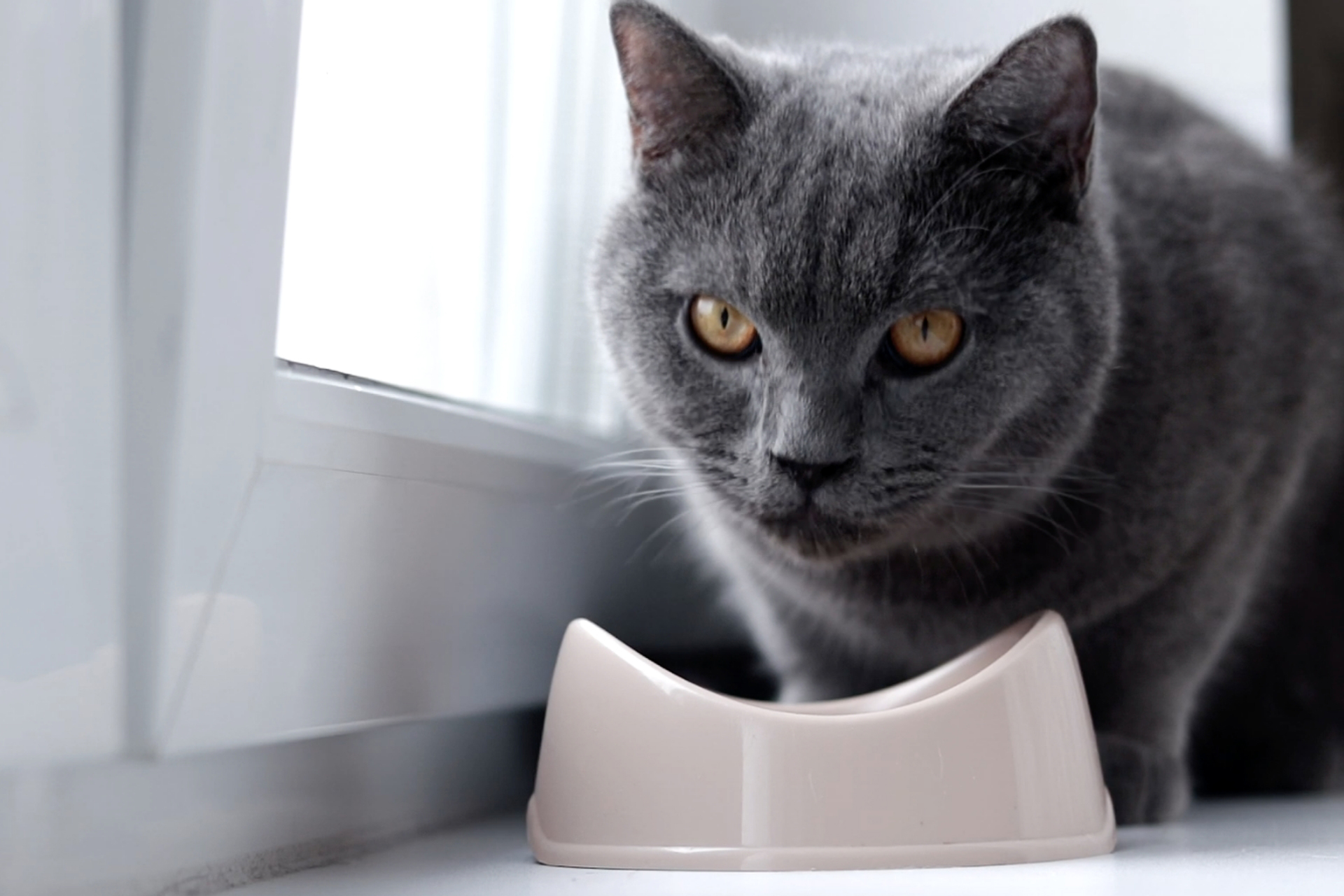Lick 'n' Lap™
Snack
Chicken Flavor & Salmon Flavor
Available in Single or Multipack


We can't avoid talking about our cats' weight any longer. In some parts of Europe, more than 40% of cats are now overweight or obese, and we need to take urgent action to protect them from problems like arthritis and diabetes.
But if we want to get our cats losing weight, simply reducing their food allowance isn't going to cut it. Our cats are meat-eaters by nature and they require a diet packed with nutrients, so cutting their portions can do more harm than good.
To sustain a healthy cat weight, it's far better to explore some of the special weight-control cat food options that are out there. In this post we'll talk you through some of the options available, so you can make an informed choice for your furry friend.

Unlike other mammals such as humans and dogs, cats are unable to digest and use nutrients from plant sources. So even a low- calorie cat food option has to be based on meat: vegetarian foods aren't an option for our little tigers.
The core of a cat's diet is protein. This provides their primary source of energy and supports everything from hair and skin to the nervous system. The protein should be backed up with lesser amounts of fats, which offer further energy and provide the building blocks for your cat's cell walls.
Many cat foods also contain carbohydrates, which can provide another fuel source. However, they are not strictly necessary in your cat's diet. The animals they would typically eat in the wild, like rodents and birds, contain little or no carb content.

A well-formulated, low-calorie cat food will reduce your kitty's overall calorie count while maintaining their nutritional balance. Indeed, these diet cat food options will provide a large amount of protein (in fact they may provide greater quantities than regular cat food) while significantly reducing the amount of fat and providing little or no carb content. Most weight-control cat food products will comprise no more than 1-2% of carbs.
To ensure a good nutritious base, low-calorie cat foods should be based on meats like chicken, turkey and salmon. These aren't just tasty for your cat, they're also packed with protein and the fat content is low. The food will also rely heavily on 'real meat', as opposed to meal (the leftovers of the animal that have been ground up).
To minimise the carb content, manufacturers should remove grains like corn and wheat as well as starchy foods like potatoes. They may also reduce the amount of jelly and gravy, which can provide extra fats.
However the food needs to be more than just efficient: it has to provide all the vitamins and minerals a cat needs as well as essential fatty acids like omega 3, which have anti- inflammatory properties.

Beyond the core requirements outlined above, you may want to look for a weight- control cat food plan that's tailored to your kitty's specific age.
In general, our cats' lives can be divided into four specific stages:
Kitten
0-12 months
Adult cat
1-7 years
Senior cat
7-11 years
Geriatric cat
11 years-plus
Each age group has its own specific dietary requirements. Kittens, for example, can benefit from additional calories, good fats and minerals as they grow. Senior cats, by contrast, require diets that are less calorie- dense as it is easier for them to slip into obesity.
To ensure your kitty gets the best possible diet for their age, we recommend you visit the vet. They will be able to provide you with a range of suggestions that are tailored to your cat's unique circumstances.

It's easy to overlook the role of treats in our cats' overall health and fitness. If we get their main meals right then they're allowed a reward once in a while, right?
Well actually we can easily ruin our cats' diets by feeding them snacks too often or choosing treats with an inadequate nutritional blend. If we want to ensure a healthy cat weight, the treats we feed our kitties should reflect their core nutritional balance and not overload them with fat and carbs.
Thankfully there are loads of diet cat food treats available, like Vitakraft's Souprise broth, which comes in small packages for perfect portion control.
1. https://www.pfma.org.uk/_assets/docs/ White%20Papers/PFMA-Obesity- Report-2019.pdf
2. https://pubmed.ncbi.nlm.nih.gov/ 27906456/
3. https://kb.rspca.org.au/knowledge-base/ do-cats-have-special-nutritional- requirements/
4. https://www.petmd.com/cat/nutrition/ do-cats-need-high-protein-cat-food https://www.catpointers.com/why-cats- need-carbohydrates/
5. https://www.vetfolio.com/learn/article/ focus-on-nutrition-cats-and- carbohydrates-implications-for-health- and- disease#:-:text=Healthy%20cats%20do%20 not%20require%20dietary%20carbohydrate. &text=However%2C%20although%20carbo hydrate%20is%20not,as%20their%20prima ry%20energy%20source.
6. https://catinfo.org/
7. https://www.rover.com/blog/can-cats- eat-chicken/
8. https://excitedcats.com/best-low-carb- cat-foods/
9. https://petsplusmag.com/8-specialized- diets-for-cats-diverse-needs/
10. https://vetnutrition.tufts.edu/2018/06/ should-i-give-fish-oil-to-my-pet/
11. https://www.pdsa.org.uk/taking-care-of- your-pet/looking-after-your-pet/kittens- cats/the-best-diet-for-your-cat
12. https://vcahospitals.com/know-your- pet/feeding-mature-senior-and

Squeeze this creamy, low-calorie treat right from the tube onto your cat’s tongue and watch your cat lick 'n' lap it all up!

Cats love the size, texture and high meat content of these soft and tasty, double-meaty treats!

High meat content (>70%), small batch production and premium ingredients combine to make these truly irresistible.

Tender chicken fillet pieces in a thick and creamy stew! Great for older cats!